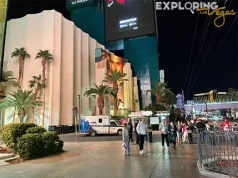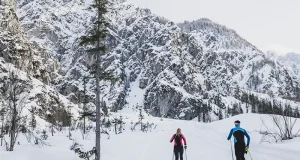California is a state like no other, combining stunning natural beauty with a rich cultural and historical legacy. Home to nearly 40 million people, its population is the largest of the US states, surpassing that of entire countries like Australia and Canada. Its vast agricultural industry is just as impressive, producing 90% of the nation’s avocados and wine, and 80% of the world’s almonds. This is partly thanks to the state’s diverse climates and expansive landscapes that support these thriving industries.
However, California’s natural charms are met with an equal amount of calamity. Its unique position along the Pacific Ring of Fire results in over 100,000 earthquakes annually, adding to the dynamic nature of life in the Golden State. Overall, California offers a blend of natural wonders and cultural richness that make it a truly special place in the Americas.
Californians themselves are also champions of innovation, and this is especially true when it comes to the aquatic lifestyle. Jack O’Neill, a Californian who introduced the first wetsuit in Santa Cruz during the early 1950s, allowed surfers to comfortably ride the state’s iconic waves year-round. And thanks to the advancement in that technology, including the inventions of the 7mm wetsuit and the drysuit, divers can now brave the temperate waters and explore California’s underwater ecosystems. And in this expedition team’s humble opinion, these dive sites are arguably some of the most incredible in the world!

Over the years, our team of professional scuba and freedivers have put an extraordinary amount of time into exploring the North Channel islands in particular. Located off the coast of Santa Barbara and Ventura counties, the islands consist of San Miguel, Santa Rosa, Santa Cruz, and Anacapa islands. These five remote land masses are part of the Channel Islands National Park and Channel Islands National Marine Sanctuary (CINMS), and are renowned for their rich biodiversity and cultural heritage. They are home to unique plant and animal species found nowhere else on earth, making them a critical area for conservation.
According to CINMS, they’ve reported that 27 species of whales and dolphins, including the world’s largest congregation of blue whales, along with fin, humpback, gray whales, common dolphins, orcas, and Risso’s dolphins populate this area. Additionally, five species of pinnipeds such as California sea lions, elephant seals, and harbor seals rely on the sanctuary, while 60 species of seabirds, including the rare Scripps’s murrelet and California brown pelican, nest, feed, and migrate in this region. And this is just the tip of the iceberg when it comes to this sanctuary’s numerous residents.
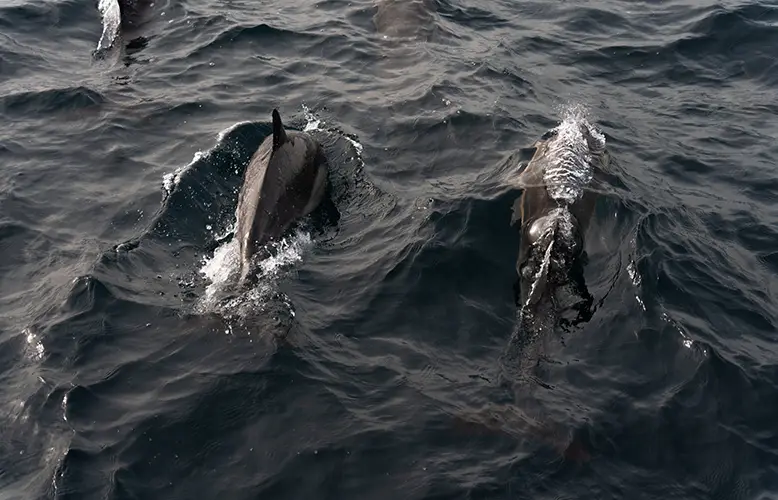
But, traveling to the Northern Channel Islands requires planning and effort, as they are accessible only by boat or small aircraft. Island Packers, the official boat concessionaire for the Channel Islands National Park, offers regular ferry services from Ventura and Oxnard harbors. The journey to the islands can take anywhere from one to three hours, depending on the destination. And on our voyage out to the northern Channel Islands, we were onboard with a legend in the California conservation community, Holly Lohuis. A naturalist and guide, Holly has been working with Island Packers since the 90s and has a wealth of knowledge about all things conservation on the islands.
Here’s the thing: meeting Holly you’d never know how much this woman has done for the national park and marine sanctuary. She’s incredibly humble in her personal narrative. But peeling back the layers, we came to realize that she’s been part of some of the bigger achievements that this region has seen in the name of science, conservation, awareness and education. Her latest initiative has been designating the Santa Barbara Channel as the ninth Whale Heritage Area in the world. This recognition, very much spearheaded by Holly, underscores the region’s dedication to promoting responsible ecotourism, expanding ocean education, and supporting ongoing research and conservation efforts.
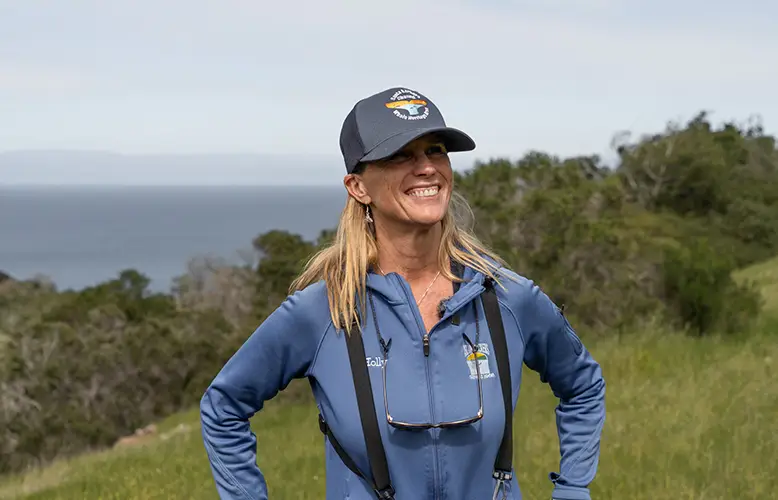
The Whale Heritage Area program, created by the World Cetacean Alliance in partnership with World Animal Protection, recognizes sites that demonstrate a harmonious coexistence between cetaceans and humans. These areas serve as models for sustainable tourism, encouraging communities to engage with marine culture and biodiversity responsibly. For the travel industry, Whale Heritage Areas are markers of sustainability, guiding tourists to choose responsible whale and dolphin watching destinations. Visitors to these regions can enjoy authentic experiences with marine life, knowing their tourism supports conservation.
The Santa Barbara Channel is one of the most biologically productive marine ecosystems on Earth, thanks to the dynamic water circulation and upwelling that occur in this transition zone around the northern Channel Islands. The convergence of major ocean currents creates rich feeding grounds that attract all of this incredible marine life. As we made our way out to the Channel Islands alongside Holly, we encountered a super pod of dolphins, which was estimated to be over 1,000 in total, an incredibly rare basking shark as well as a few humpbacks that wouldn’t leave us alone—an exciting treat that delayed our entry into port over an hour!
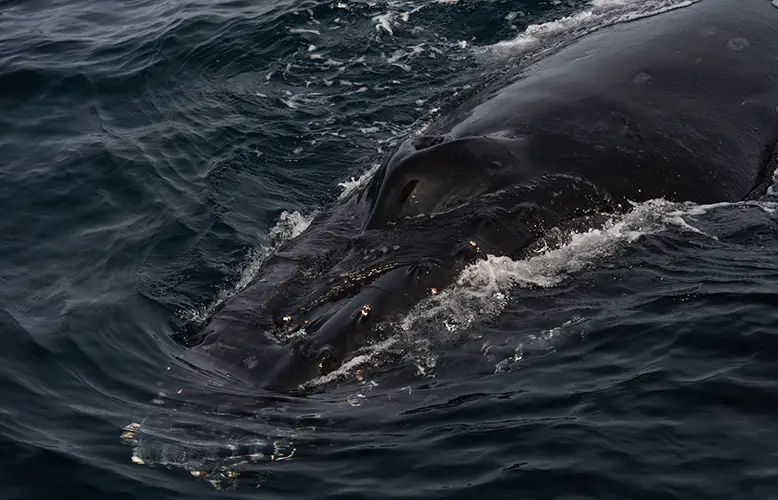
Holly explained that establishing the area as a Whale Heritage Area has a lot to do with the programs that are being conducted in the Santa Barbara Channel, such as the ‘Blue Whales and Blue Skies‘ program and Whale Safe. These two programs encourage shipping vessels that use this channel frequently to slow down, ultimately reducing the risk of fatal ship collisions with whales, while also mitigating air pollution and ocean noise. Innovative tools like Whale Safe’s mapping and analysis provide critical data to inform these protective measures.
Then there are organizations like Happywhale and Cascadia Research that are advancing our understanding of whale populations through citizen science and long-term research projects. The West Coast Large Whale Entanglement Response Program works to reduce whale entanglements in fishing gear, ensuring the health of whale populations along the U.S. West Coast. The Channel Islands Naturalist Corps (CINC), in which Shauna Fry (Outreach Coordinator, Citizen Science Coordinator and Public Information Officer with CINMS) oversees this effort, further supports these efforts by educating the public and conducting citizen science.
Trained CINC volunteers serve on local whale watch tours, lead island hikes, participate in outreach events, and collect valuable data on marine mammals and other sanctuary resources. Through education and hands-on involvement, CINC fosters a deeper connection between people and the marine environment, promoting stewardship and conservation of the Channel Islands’ unique ecosystems.
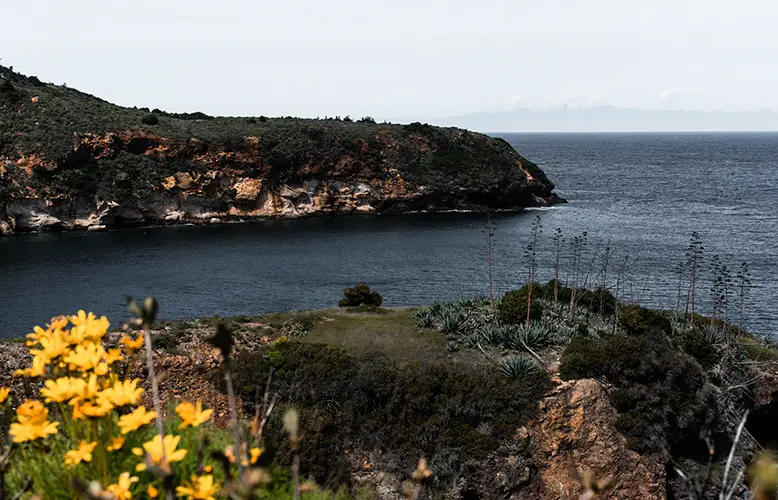
Once we made it onto Santa Cruz island, we landed at Prisoners Harbor where we were at long last getting our first experience actually ON one of the Channel Islands. Holly shared that, “a lot of people do not realize Channel Islands is a national park. It’s our best hidden secret with great conservation success stories such as the resurgence of the blue whale, humpback whale, and of course the island fox!”
Spending most of our time underwater, we don’t often get the chance to traverse the terrestrial sites, let alone experience something like a unique sub-species of island fox that are found only here on the Channel Islands. After about 30 minutes of hiking, we spotted our first tiny fox, and were amazed at how many we saw thereafter. Holly revealed that they are descendants of the mainland gray fox, and are actually the largest native mammals on the Channel Islands (despite being one of the smallest canids in the world). In the 1990s, four subspecies of the island fox faced catastrophic population declines, primarily due to predation by golden eagles.
By 2000, the populations on San Miguel, Santa Rosa, and Santa Cruz Islands had plummeted, with San Miguel and Santa Rosa each having only 15 individuals left. In response, the National Park initiated a recovery program which included captive breeding, reintroducing foxes, removing golden eagles, re-establishing bald eagles, and eliminating non-native ungulates. These concerted efforts successfully reversed the decline, and today the fox populations have recovered significantly. Today, ongoing monitoring ensures their continued survival and addresses future threats. These efforts have earned the island fox a “near threatened” status on the IUCN Red List of Endangered Species.
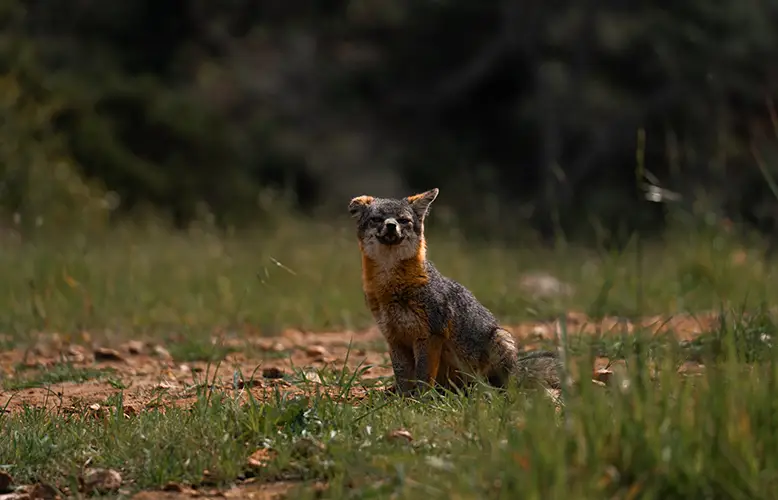
It’s clear for someone like Holly, who grew up in the USA’s Northwest, there’s always been a deep connection with both land and sea—recognizing the magic that sits right on her doorstep in California. Her curiosity, inspired by watching Jacques Cousteau, eventually led her to pursue marine biology and ultimately meet Jean Michel Cousteau in 1993. Before working with Island Packers, she was working for his Ocean Futures Society from 2002-2018 and running large-scale expeditions alongside Jean Michel.
But, always finding her way back home, Holly believes the Channel Islands are one of the top three national parks globally, showcasing the incredible potential of dedicated conservation efforts. She emphasized throughout our time with her that the key to preserving such natural wonders starts with a genuine care and love for the environment, rather than the pursuit of profit.
“If we want to protect our natural wonders, we need more people outside: seeing it, experiencing it, getting sea sick on the water, getting muddy on the trails. To protect and believe is to live it firsthand. Get involved. Be in nature,” Holly preached as we made our way around Santa Cruz. “I invite anyone wanting to see totally unexpected nature right here in California to call me.”
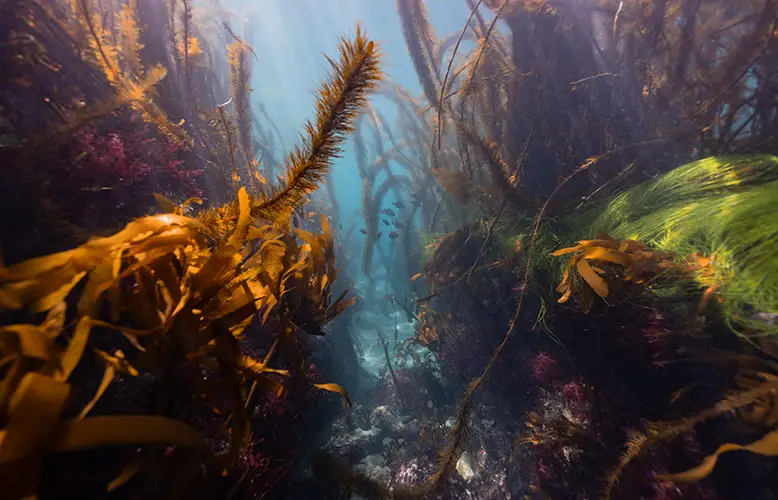
Despite California being so close to home, so large, and so populated, it might sum up what Edges of Earth is truly all about: remarkable conservation stories right at our own doorstep. We left the Channel Islands with a strong sense of gratitude and privilege to have spent so much time in such an amazing part of our natural world. And it’s all thanks to the amazing work and the intricately designed collaborative efforts of people like Holly. Upon leaving California we were certain of two things: that we’d be returning soon, and that the state had far more surprises left in store.




